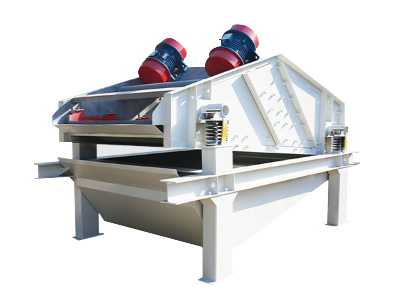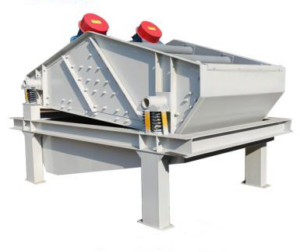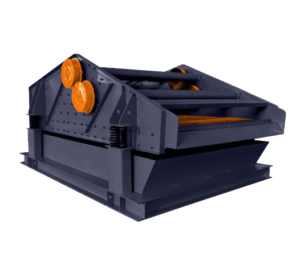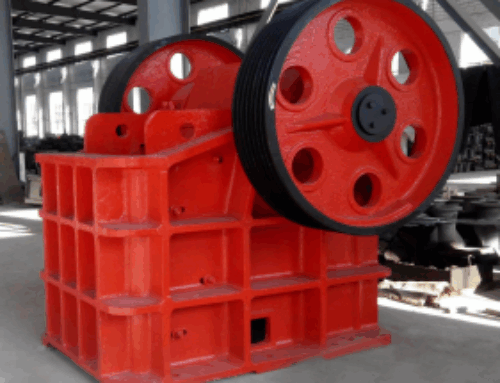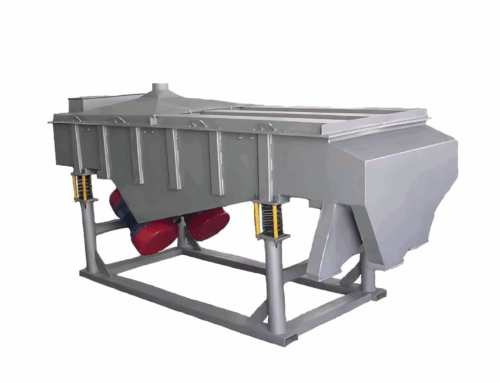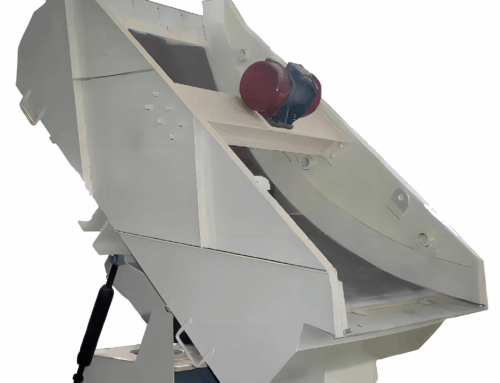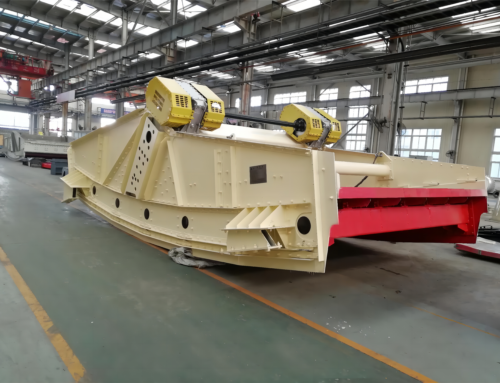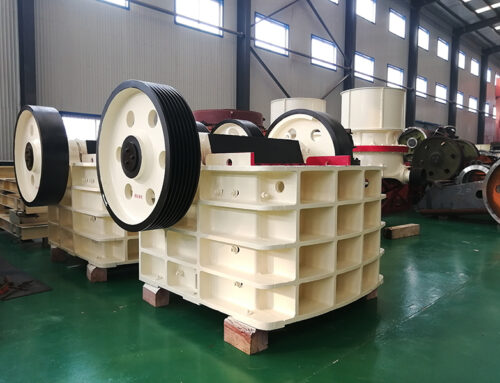In the field of coal production and processing, coal slurry dewatering screen is an indispensable key equipment in the coal treatment process. With the development of coal industry and the increasingly strict environmental protection requirements, the efficient operation of coal slurry dewatering screen is of great significance in improving coal quality, optimising resource utilisation efficiency and reducing environmental pollution. Choosing the right coal slurry dewatering screen and scientific procurement is crucial for the production and operation of coal enterprises and sustainable development, which is precisely the reason why this article is going to discuss the selection points and procurement suggestions.
一.Material characteristics determine the basis of screen type
Material characteristics is the primary basis for coal slurry dewatering screen type, different particle size, humidity, viscosity and other characteristics, determines what kind of screen type can be perfectly adapted to achieve efficient dewatering.
Particle size, as one of the key factors of material properties, has an important impact on the choice of dewatering screen. For the smaller particle size of coal slurry, the interaction force between the particles is stronger, the water is more likely to be wrapped up in it, and it is more difficult to dewater. High-frequency dewatering screen can be a great help, it is through the high-frequency vibration, can effectively destroy the adsorption force between the coal slurry particles and water, accelerate the separation of water. In some coal washing plants, when dealing with coal slurry with particle size less than 0.5mm, the dewatering efficiency of high-frequency dewatering sieve can be increased by 20% – 30% compared with other common sieve types, which can significantly reduce the water content of the slurry to meet the production requirements. For coal slurry with large particle size, ordinary linear vibrating screen or circular vibrating screen can do the job. These screen types in the vibration process, can make the large particles of coal slurry in the screen surface rapid jumping, tumbling, to achieve the separation of water and coal slurry.
Humidity is also an important factor affecting the dewatering screen type. Coal slurry with high humidity has poor fluidity, which is easy to pile up on the screen surface, affecting the dewatering effect. High-frequency dewatering screen can use high-frequency vibration to destroy the tension on the surface of coal slurry, so that the moisture is easier to detach from the slurry. For the relatively small humidity of coal slurry, vibration dewatering screen or other conventional screen type can play a better role. When the humidity of coal slurry is 20% – 30%, vibration dewatering screen can reduce the moisture in coal slurry to a lower level through reasonable vibration parameter setting, so as to meet the requirements of subsequent processing or disposal.
The viscosity of coal slurry should not be ignored. Sticky coal slurry is easy to adhere to the screen mesh, resulting in clogging of the screen holes, affecting the screening and dewatering efficiency. In this case, some screen mesh with special structure or material, such as polyurethane screen mesh, because of its smooth surface, not easy to adhere to the characteristics of the material, can effectively reduce the adhesion of the coal slurry, improve the screen throughput rate, to ensure the normal operation of the dewatering screen. For the less viscous coal slurry, ordinary metal screen can meet the requirements.
二.Matching of processing capacity and production scale
The accurate matching of processing capacity and production scale is the key to ensure the efficient operation of coal slurry dewatering screen. If the processing capacity is not properly selected, it will not only cause waste of resources, but also may affect the smooth operation of the whole production process.
When determining the processing capacity of the dewatering screen, the first step is to make a comprehensive and accurate assessment of the production scale. Factors to be considered include the amount of coal mined, the daily processing capacity of the washing plant, and the amount of coal sludge produced. Assuming a medium-sized coal washing plant with a daily processing capacity of 5,000 tonnes of coal, and according to past production data and experience, the generation rate of coal sludge is about 10%, then the amount of coal sludge generated per day is about 500 tonnes. When selecting the dewatering screen, it is necessary to determine the appropriate processing capacity according to this coal sludge production.
Generally, the capacity of a dewatering screen is measured by the amount of coal slurry that can be processed per unit of time. Usually, the processing capacity of dewatering screen is related to the screen surface area, vibration frequency, material properties and other factors. The larger the screen surface area is, the more materials can be processed per unit time; the higher the vibration frequency is, the faster the movement of materials on the screen surface is, and the dewatering efficiency will be improved accordingly. However, these factors are not isolated, they affect each other and need to be considered comprehensively.
In the actual production, also need to consider a certain margin. This is because some unforeseen circumstances may occur in the production process, such as fluctuations in coal quality, temporary equipment failures, etc., which may lead to an increase in the output of coal slurry. In order to cope with these situations, a margin of 10% – 20% is usually reserved when selecting the processing capacity of the dewatering screen. In this way, even when production fluctuates, the dewatering screen is able to meet the processing demand and ensure the continuity of production.
三.The consideration of screen material and service life
As one of the core components of the coal slurry dewatering screen, the choice of material is directly related to the service life and screening effect of the dewatering screen. At present, the common screen materials on the market mainly include stainless steel and polyurethane, each of which has its own unique advantages and disadvantages.
Stainless steel screen mesh has high strength and hardness, can withstand large material impact, not easy to deform. When dealing with coal slurry with high hardness, stainless steel screen can maintain good screening performance and is not easy to be damaged. It also has good corrosion resistance, and can work stably for a long time in the environment of humid and corrosive medium. In some coal slurry dewatering screens containing acidic or alkaline substances, stainless steel screen can effectively resist the erosion of chemicals to ensure the normal use of the screen. However, stainless steel screen mesh also has some shortcomings. Its surface is relatively smooth, and the friction of coal slurry particles on the screen is small, which can easily lead to clogging of the screen holes and affect the screening efficiency. Moreover, the price of stainless steel screen is relatively high, which increases the procurement cost of the equipment.
Polyurethane screen mesh, on the other hand, is favoured for its excellent wear resistance and elasticity. Polyurethane material has a high modulus of elasticity, can effectively absorb the impact of the material, reduce the wear and tear of the screen. When dealing with coal slurry with high particle hardness and strong friction, the service life of polyurethane screens can be 2 – 3 times longer than stainless steel screens. Polyurethane screen also has good self-cleaning performance, the polyurethane material on its surface can make the coal slurry particles are not easy to adhere to, effectively preventing clogging of the screen holes, and improve the screening efficiency. However, the performance of polyurethane screen mesh in high temperature environment will be affected to some extent, and its temperature resistance is relatively poor. In a high temperature working environment, polyurethane screen may be deformed, aging and other problems, thus affecting its service life and screening effect.
四.Selection of vibration mode and frequency
Different vibration methods and frequencies can have a significant effect on the dewatering effect of coal slurry. Understanding the characteristics of various vibration methods and selecting the appropriate vibration frequency according to the characteristics of coal slurry is the key to achieving efficient dewatering.
Common vibration methods mainly include linear vibration and circular vibration. Linear vibrating screen through the vibration motor generated by the excitation force, so that the screen body to do linear reciprocating motion, the material in the screen surface forward for linear motion. This type of vibration is characterised by high screening accuracy, which can make the material evenly distributed on the screen surface, and is suitable for processing coal slurry with smaller particle size and higher requirements for screening accuracy. In the dewatering treatment of fine coal slurry, linear vibrating screen can effectively remove the water in the slurry, and at the same time ensure that the particle size of the slurry is evenly distributed to meet the quality requirements of fine coal. While the circular vibrating screen is through the centrifugal force generated by the eccentric block, so that the screen body makes circular movement, and the material makes circular movement on the screen surface. The processing capacity of circular vibrating screen is larger, which can make the material jump and tumble rapidly on the screen surface, and it is suitable for processing coal slurry with larger particle size and smaller viscosity. When dealing with coarse-grained coal slurry, the circular vibrating screen can quickly remove the water in the coal slurry and improve the production efficiency.
The choice of vibration frequency is also crucial. High-frequency vibration can improve the dewatering efficiency of coal slurry, because high-frequency vibration can destroy the adsorption force between the coal slurry particles and the moisture, so that the moisture can be separated from the coal slurry more easily. For coal slurry with small particle size and high humidity, the use of high frequency vibration can significantly improve the dewatering effect. However, high-frequency vibration also increases the wear and energy consumption of the equipment. Therefore, when choosing the vibration frequency, it is necessary to consider the characteristics of the coal slurry, the durability of the equipment and energy consumption. Generally speaking, a lower vibration frequency can be selected for coal slurry with larger particle size and less viscosity, while a higher vibration frequency is required for coal slurry with smaller particle size and higher humidity.
The selection and purchase of coal slurry dewatering screen is a complex and critical work, which is related to the quality, efficiency and cost of coal production. In the selection process, the material characteristics are the first consideration, different particle size, humidity and viscosity of the coal slurry need to match different types of dewatering screen, high frequency dewatering screen is suitable for small particle size, high humidity of the coal slurry, while the linear vibrating screen or circular vibrating screen is more suitable for larger particle size of the coal slurry. The processing capacity should be precisely matched with the production scale, fully consider the production fluctuations, and reserve a certain margin to ensure that the equipment can operate efficiently under different working conditions. The choice of screen material affects the life of the equipment and screening effect, stainless steel screen mesh is high strength, corrosion resistance, but easy to plug the holes, polyurethane screen mesh wear resistance and self-cleaning is good, but not high temperature, need to be weighed according to the actual situation. The choice of vibration mode and frequency is also crucial, linear vibrating screen with high screening accuracy, circular vibrating screen with large processing capacity, high frequency vibration can improve the dewatering efficiency, but take into account the wear and tear of equipment and energy consumption.

